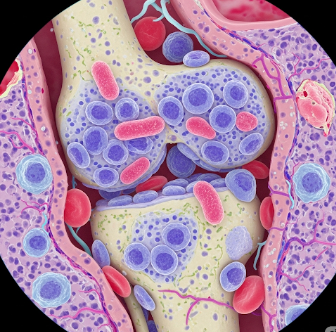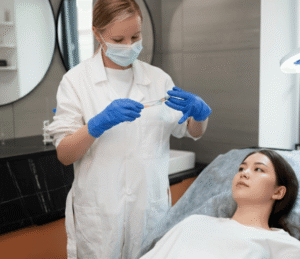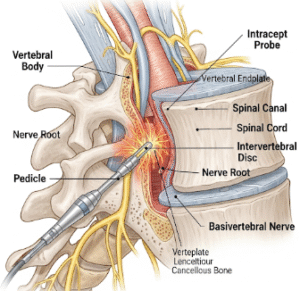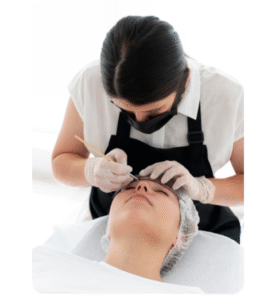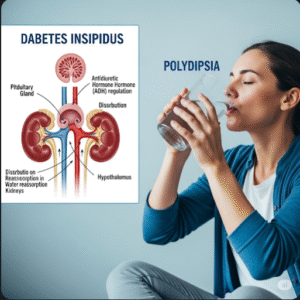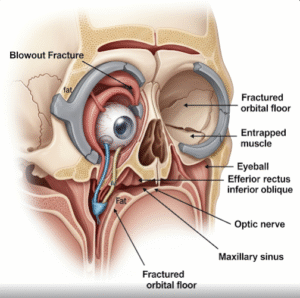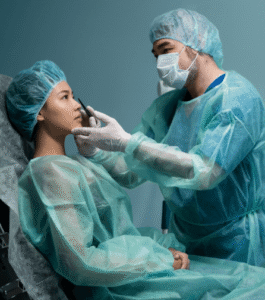Overview
Bacterial arthritis, also known as septic arthritis, is a serious joint infection caused by bacteria that can lead to rapid joint damage if not diagnosed and treated promptly. The condition typically affects large joints such as the knees, hips, shoulders, or elbows, though it can occur in any joint in the body. Bacterial arthritis requires urgent medical attention because the infection can quickly destroy cartilage and bone within the joint, leading to permanent disability. In Korea, the availability of advanced diagnostic tools, specialized orthopedic and infectious disease departments, and prompt surgical interventions ensures high-quality care for patients with bacterial arthritis. The country’s integrated healthcare system allows for rapid coordination between laboratory testing, imaging, and surgical teams, minimizing the risk of long-term complications.
What is Bacterial Arthritis?
Bacterial arthritis is a joint infection where bacteria invade the synovial fluid and joint tissues, causing severe inflammation. This infection can result from bacteria entering the bloodstream (hematogenous spread), direct penetration through injury or surgery, or spread from nearby infected tissues. The most common bacteria responsible for septic arthritis include Staphylococcus aureus (including MRSA), Streptococcus species, and Neisseria gonorrhoeae. In children, Haemophilus influenzae was once a major cause, though vaccination has greatly reduced these cases. If left untreated, bacterial arthritis can destroy joint structures within days, making early detection and treatment critical.
Symptoms
Bacterial arthritis usually develops quickly, often within hours to a few days. Symptoms may include:
- Sudden, intense joint pain
- Swelling and warmth around the affected joint
- Redness of the overlying skin
- Severe limitation of joint movement
- Fever and chills
- Fatigue or general feeling of illness
- In children, irritability and refusal to use the affected limb
In severe cases, pus may accumulate in the joint space, and symptoms can worsen rapidly, increasing the risk of joint destruction.
Causes
Bacterial arthritis occurs when bacteria invade a joint, most commonly through:
- Hematogenous spread – bacteria traveling in the blood from another infection site, such as the skin, urinary tract, or lungs.
- Direct inoculation – bacteria entering through open wounds, joint surgery, or injections.
- Spread from nearby tissues – infections in bones (osteomyelitis) or soft tissues can extend into the joint.
High-risk bacterial strains include:
- Staphylococcus aureus (most common in adults)
- Neisseria gonorrhoeae (common in sexually active young adults)
- Streptococcus pneumoniae and other streptococcal species
- Gram-negative bacilli (in older adults and those with weakened immune systems)
Risk Factors
Certain factors make individuals more vulnerable to bacterial arthritis:
- Older age – reduced immune function increases susceptibility
- Weakened immune system – from conditions like diabetes, HIV, or cancer treatments
- Joint injury or surgery – including prosthetic joint replacement
- Rheumatoid arthritis or gout – pre-existing joint disease can mask symptoms and delay diagnosis
- Intravenous drug use – increases risk of bloodstream infections
- Skin infections – especially chronic or untreated cases
- Sexually transmitted infections – can lead to gonococcal arthritis in younger adults
Complications
Without prompt treatment, bacterial arthritis can cause:
- Permanent cartilage destruction
- Bone damage and deformity
- Chronic pain and stiffness
- Joint instability or loss of mobility
- Spread of infection to other body parts (sepsis)
- Amputation in extreme cases of uncontrolled infection
- Increased risk of death in severe systemic infections
Prevention
Preventing bacterial arthritis involves reducing the risk of joint infection:
- Treat skin wounds promptly and keep them clean
- Manage chronic illnesses like diabetes to improve immune response
- Practice safe injection techniques in medical and personal settings
- Use protective equipment to avoid joint injuries during sports or work
- Screen for and treat sexually transmitted infections early
- Maintain good oral hygiene to reduce the risk of bacteria entering the bloodstream from dental sources
Treatment Options in Korea
In Korea, bacterial arthritis is treated as a medical emergency due to the risk of rapid joint destruction. The treatment approach involves immediate infection control, joint drainage, and supportive care.
1. Diagnosis
Korean hospitals use multiple tests to confirm bacterial arthritis:
- Joint aspiration (arthrocentesis) – withdrawing synovial fluid to test for bacteria, white blood cells, and crystals
- Gram stain and culture – to identify the specific bacterial strain
- Blood tests – to check for infection markers like elevated white blood cell count, ESR, and CRP
- Blood cultures – to detect bacteria circulating in the bloodstream
- Imaging – X-rays, ultrasound, or MRI to assess joint damage and fluid buildup
2. Medical Treatments
- Intravenous antibiotics – initiated immediately after diagnosis, often before culture results are available, then adjusted according to bacterial sensitivity
- Oral antibiotics – after initial IV treatment, typically for several weeks
- Pain management – using NSAIDs or acetaminophen to reduce pain and inflammation
3. Joint Drainage and Surgery
In Korea, removing infected fluid is a key step in preventing joint destruction:
- Needle aspiration – repeated daily or every few days until fluid is clear
- Arthroscopic drainage – minimally invasive surgery to wash out the joint
- Open surgical drainage – in severe cases or when minimally invasive methods are insufficient
- Prosthetic joint removal – in cases of infected artificial joints, followed by staged replacement
4. Rehabilitation and Support
Once infection is controlled, rehabilitation begins to restore joint function:
- Gentle range-of-motion exercises to prevent stiffness
- Gradual strengthening programs under physiotherapy supervision
- Nutritional support to aid healing and immune function
- Education on recognizing early symptoms of infection recurrence
5. Medical Tourism for Bacterial Arthritis in Korea
Korea’s reputation for rapid diagnostics, skilled orthopedic surgeons, and infection management makes it a trusted choice for international patients. Hospitals in Seoul, Busan, and Daegu offer advanced arthroscopic surgery and culture-guided antibiotic therapy, ensuring high recovery rates with minimal long-term joint damage.

